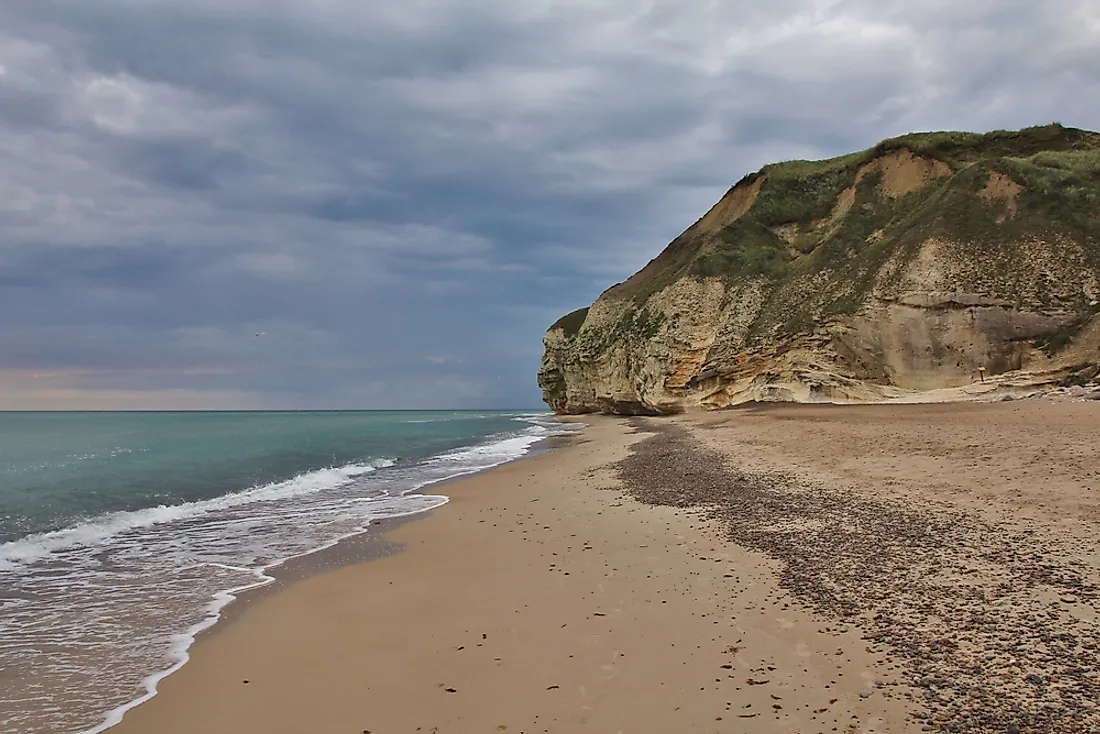What Are The Most Important Natural Resources of Denmark?

Denmark possesses few but valuable natural resources. Arable land and fishing are some of Denmark's most important natural resources. The country also has a small quarrying and mining sector. The resources in existence in Denmark's underground include clay, gravel, oil, natural gas, limestone, and chalk. Danish companies, as well as global firms, are involved in the extraction of Denmark's natural resources.
Arable Land
Arable land is one of Denmark's most important natural resources. About half of the nation's land is exploited and fertilized. Crops include cereals such as barley and wheat, which account for about half of cultivated land, as well as oats, rye, sugar beets, turnips, and potatoes.
Animal Husbandry
Domesticated animals such as dairy cattle, pigs, and poultry are another important natural resource of Denmark. Most of the country's farms are small- or medium-sized and remain family owned. Fur farming is also practiced.
Fish
Denmark is one of the largest exporters of fish in the world and as such the fishing industry is an important natural resource. Herring and cod are some of the most important fish species to the nation. There is also a small aquaculture industry.
Oil and Natural Gas
The discovery oil together with natural gas in the Danish territory of the North Sea was a huge relief for the country which had previously depended on imported petroleum. The local industry in collaboration with the state developed the oil and gas fields to commence major productions in 1984. By 1997, Denmark had achieved self-sufficiency in the two resources. The crude oil produced from the oil fields is estimated at 10 billion liters annually, which is enough since Denmark is a small State. Denmark can supply all the natural gas it requires, most of which is channeled towards heating homes and the production of heat and electricity. Esbjerg is the primary city for the oil and gas sector, and multiple firms such as ABB, COWI, and Maersk Oil have offshore-related operations in the city.
Moler
The term moler is a Danish word which refers to the unique diatomite only found in Denmark. Danish moler contains a high content of clay, and it is available in the northwestern region of Denmark. The clay content makes moler suitable for making insulation bricks. The moler's unique organic structure makes it ideal for the production of building bricks and insulation bricks for high-temperature industries. Few natural resources are similar to the Danish moler, and only the Russian diatomite comes remotely close in similarity.
Sand and Gravel
Denmark consumes vast quantities of gravel and sand in the construction of railways, buildings, roads, and numerous other structures. The nation has enormous amounts of the resources present in the sedimentary layers that were deposited in the Ice Age. The sand and gravel in Denmark not only meets its requirements but it is also exported to other Scandinavian nations and Germany.
Limestone, Chalk, and Clay
The extraction and use of clay and limestone have been carried out for centuries, and it continues in Denmark. There is a big quarry close to Fakse whose limestone deposits are extracted by Faxe Kalk. Clay and chalk are also in abundance in the country.
Salt
The salt exploited in Denmark currently is primarily used for health products. The island of Læsø was synonymous with salt production in the middle Ages. The final concentration, done in hundreds of salt kilns, used up large amounts of wood and it resulted in the extensive deforestation of the island prompting the ban of salt extraction. Today, the extraction is done on a small scale as a tourist attraction and an archaeological experiment.
Wind, Water, and Solar Energy
Denmark is one of the world's nations that are making significant strides in the addition of clean energy. In 2015, about 42% of the domestic electricity used in Denmark was wind generated. The country has been championing wind use, and it exports the Siemens and Vestas wind turbines. The country is also looking to solar and water energy to boost its use of green energy.











